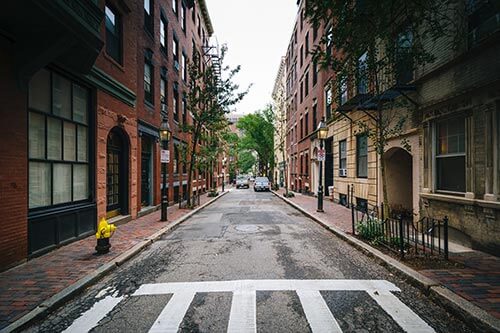
You can perform a Section 1031 exchange on residential property or real estate, but there are specific requirements and limitations. Under Section 1031 of the Internal Revenue Code, an investor can defer capital gains taxes on the sale of real property by reinvesting the proceeds into like-kind property. While Section 1031 originally applied to many types of property, the 2017 Tax Cuts and Jobs Act limited it to real property only (i.e., real estate). Residential real estate held for investment purposes qualifies, but personal-use residential property (like a primary residence) generally does not.
Are you considering a 1031 exchange on residential property? 1031 Exchange Intermediaries can help you navigate the requirements and limitations of the process, ensuring a smooth and compliant transaction. Contact us today to review and discuss how a 1031 exchange can fit into your financial strategy.
Key Requirements for a Section 1031 Exchange on Residential Property
In order to qualify for a 1031 exchange on residential property, the following key requirements must be met:
- Property Must Be Held for Investment or Business Use: To qualify, the residential real estate must be held for investment or used in a trade or business. This means:
- Rental Properties: Residential rental properties qualify as investment property.
- Vacation Homes: Vacation homes can qualify under certain conditions, typically if they are rented out and meet specific use and rental criteria set by the IRS.
- Like-Kind Requirement: The replacement property must also be real estate held for investment or business purposes. However, "like-kind" is interpreted broadly in the context of real estate, so you could exchange one type of residential investment property (e.g., a single-family rental home) for another (e.g., an apartment building or commercial property).
- Primary Residences Do Not Qualify: A primary residence (your personal home) does not qualify for a 1031 exchange on residential property. However, if part of a property is used for investment purposes (e.g., a duplex where you live in one unit and rent out the other), the investment portion could potentially qualify.
- Follow IRS Timing Rules:
- 45-Day Identification Period: You must identify the replacement property within 45 days of the sale of your relinquished property.
- 180-Day Closing Period: The exchange must be completed within 180 days from the sale of the relinquished property.
- Use of a Qualified Intermediary: To ensure compliance with IRS rules and avoid constructive receipt of the funds, you must use a Qualified Intermediary to hold the sale proceeds and facilitate the exchange.

Example of a 1031 Exchange with Residential Real Estate
Suppose you own a single-family rental home that you’ve rented out for several years. If you decide to sell this property, you could use a 1031 exchange on this residential property to defer capital gains taxes by reinvesting the sale proceeds into another rental property, such as a multi-family apartment building or a vacation rental property held for investment purposes.
Special Rules for Vacation Homes
Vacation homes can qualify for a 1031 exchange if they meet specific requirements, such as:
- Renting out the property for at least 14 days each year.
- Limiting personal use to no more than 14 days per year or 10% of the total days it was rented, whichever is greater.
Learn more about 1031 exchange for vacation home properties.
Converting A Rental Property To A Personal Residence
The IRS provides a safe harbor for converting a rental property into a personal residence under Revenue Procedure 2008-16. This safe harbor applies to 1031 exchange properties that the taxpayer initially held for investment purposes and later wishes to convert to a personal residence, allowing them to eventually qualify for the primary residence exclusion under Section 121, which can exempt a portion of the gain from capital gains tax.
Safe Harbor Requirements for Converting a Rental Property to a Personal Residence
To qualify for the safe harbor, the taxpayer must meet certain criteria before and after the exchange:
- Holding Period for the Rental Property:
- The taxpayer must hold the property for at least two years as an investment or rental property after the 1031 exchange.
- During each of those two years, the property must be rented to a tenant at fair market rent for at least 14 days per year.
- Limited Personal Use:
- The taxpayer’s personal use of the property is restricted to the greater of 14 days per year or 10% of the days the property was rented during each of the two years.
- Conversion to Personal Use After Two Years:
- After meeting the two-year holding period as a rental property, the taxpayer may begin using the property as their primary residence.
Additional Considerations for the Primary Residence Exclusion (Section 121)
If the taxpayer meets the safe harbor requirements and later converts the property to a personal residence, they may be eligible for the primary residence exclusion under Section 121, which allows them to exclude up to $250,000 ($500,000 for married couples filing jointly) of gain from capital gains tax upon selling the home, provided they meet the two-out-of-five-year rule:
- They must live in the property as their primary residence for at least two of the five years prior to the sale.
Allocation of Gains and Depreciation Recapture
- For properties converted from rental to personal use, the primary residence exclusion only applies to the gain attributed to the period when the property was used as a primary residence.
- Any gain attributed to the prior rental period, including depreciation recapture, remains taxable and is subject to a maximum 25% recapture rate.
Example of Using Safe Harbor for a Rental-to-Residence Conversion
Suppose you complete a 1031 exchange to acquire a rental property, which you hold and rent out for at least two years, meeting the safe harbor requirements. After this period, you move into the property as your primary residence. After living there for at least two more years, you sell the property. You could potentially exclude up to $250,000 (or $500,000 if married) of the gain under Section 121, while any depreciation taken during the rental period would still be subject to tax.
In summary, the safe harbor under Revenue Procedure 2008-16 allows taxpayers to convert a rental property acquired through a 1031 exchange into a personal residence after holding it as a rental for at least two years, creating a path to eventually qualify for the primary residence exclusion and benefit from substantial tax savings.
Contact Us to Start Your 1031 Exchange on Residential Property
In summary, residential real estate held for investment purposes, such as rental properties, can qualify for a 1031 exchange, allowing you to defer capital gains taxes by reinvesting in other like-kind investment properties.
A 1031 exchange on residential property allows investors to defer capital gains taxes by reinvesting the proceeds from the sale of one property into a like-kind property. However, there are strict rules to follow, such as identifying a replacement property within 45 days and completing the exchange within 180 days. Understanding these requirements and limitations is crucial to maximizing the benefits of a 1031 exchange. The team at 1031 Exchange Intermediaries is here to guide you through the process, ensuring compliance and helping you make the most of your investment strategy. Contact our 1031 exchange intermediary team today to learn more or to begin your 1031 exchange.

